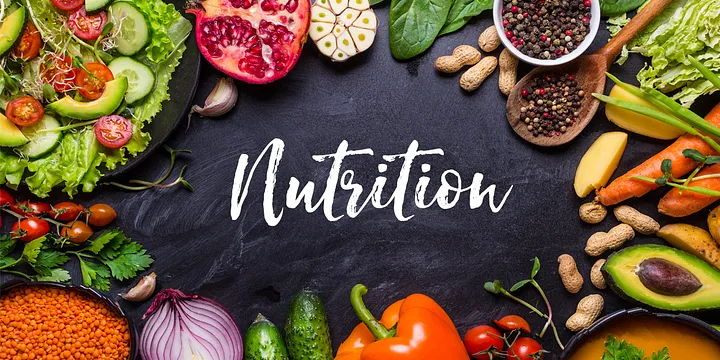In our fast-paced world, it’s easy to overlook the importance of nutrition. However, understanding and applying the essential guide to nutrition can significantly impact our overall health, energy levels, and mood. A well-balanced diet is not just about counting calories; it’s about nourishing our bodies with the right mix of nutrients to support our daily activities. In this essential nutrition guide, we will explore the basics of macronutrients, micronutrients, building a balanced plate, and incorporating superfoods into your diet.
Understanding Nutrition Basics
What is Nutrition?
Nutrition refers to taking in food and using it for growth, metabolism, and repair. It plays a critical role in maintaining overall health and preventing diseases. Good nutrition supports physical and mental performance, enhancing our ability to work, exercise, and engage in daily activities

Macronutrients

- Carbohydrates: These are the body’s primary energy source. They can be classified into simple carbohydrates (sugars) and complex carbohydrates (starches and fibers). Foods like whole grains, fruits, and vegetables are rich in carbohydrates and fiber, providing sustained energy throughout the day.
- Proteins: Essential for building and repairing tissues, proteins can be found in sources like meat, fish, eggs, legumes, and nuts. Proteins are made up of amino acids, some of which are essential and must be obtained from food. Including a variety of protein sources can help ensure you get all the necessary amino acids.
Fats: Healthy fats, such as those in avocados, nuts, and olive oil, support cell function and hormone production. They also play a role in absorbing fat-soluble vitamins (A, D, E, and K). It’s important to differentiate between healthy unsaturated fats and unhealthy trans and saturated fats
Micronutrients

Vitamins and minerals are crucial for various bodily functions, including immune support, bone health, and energy production. A varied diet rich in fruits and vegetables can help ensure adequate intake of these essential nutrients. For example:
- Vitamin C: Found in citrus fruits, strawberries, and bell peppers, it supports the immune system and skin health.
- Iron: Important for oxygen transport in the blood, iron can be found in lean meats, beans, and leafy greens
Building a Balanced Plate

Creating a balanced meal involves combining different food groups in appropriate portions. Consider the MyPlate model, which suggests filling your plate with:
- Fruits and Vegetables: Aim for half your plate to be filled with a colorful variety of fruits and veggies. The more colors you include, the broader the range of nutrients you’ll receive.
- Whole Grains: Choose whole grains like brown rice, quinoa, and whole-grain bread over refined grains. Whole grains are higher in fiber and nutrients compared to their processed counterparts.
- Proteins: Include lean proteins such as chicken, fish, beans, or tofu. Vary your protein sources to get a range of nutrients and benefits.
- Healthy Fats: Add a small amount of healthy fats like olive oil or nuts to enhance flavor and nutrition. Healthy fats can also help you feel full and satisfied.
Portion Control
Understanding portion sizes is crucial for maintaining a healthy weight. Use your hand as a guide: a palm-sized portion of protein, a fist-sized portion of grains, and two fist-sized portions of vegetables are good starting points.
Superfoods to Incorporate
Certain foods are often labeled as “superfoods” due to their high nutrient density and health benefits. Here are a few to consider:
- Quinoa: A complete protein that is also gluten-free, quinoa is packed with fiber and essential amino acids. It’s versatile and can be used in salads, soups, or as a side dish.
- Kale: A nutrient powerhouse, kale is rich in vitamins A, C, and K, as well as antioxidants. It can be enjoyed in salads, smoothies, or sautéed as a side dish.
- Berries: Blueberries, strawberries, and raspberries are loaded with antioxidants, vitamins, and fiber, making them a great addition to any diet. They can be eaten fresh, added to yogurt, or blended into smoothies.
- to contact here
Other Notable Superfoods:
Chia Seeds: High in omega-3 fatty acids and fiber, these tiny seeds can be added to smoothies, oatmeal, or puddings for added nutrition.
Salmon: Rich in omega-3 fatty acids, salmon supports heart health and brain function. Aim to include fatty fish in your diet at least twice a week.
Nutrition Myths Debunked
There are many myths surrounding nutrition that can lead to confusion. Here are a few common ones:
- Myth: “Carbs make you gain weight.”
Fact: Carbohydrates are an essential energy source. The key is to choose whole, unprocessed carbs rather than refined ones. Complex carbs provide sustained energy and help maintain blood sugar levels. - Myth: “All fats are bad.”
Fact: Healthy fats are crucial for brain health and hormone production. Focus on unsaturated fats found in fish, nuts, and avocados, while minimizing trans fats and excessive saturated fats. - Myth: “You need to detox to be healthy.”
Fact: The body has its natural detoxification systems, primarily the liver and kidneys. A balanced diet rich in whole foods supports these processes more effectively than detox diets or cleanses.
Personalized Nutrition Tips
Everyone’s dietary needs are different. Here are some tips for various dietary preferences:
- For Vegetarians/Vegans: Ensure you’re getting enough protein from sources like legumes, tofu, and quinoa. Consider B12 supplementation if you’re not consuming animal products, as B12 is primarily found in animal products.
- For Gluten-Free Diets: Focus on naturally gluten-free foods like fruits, vegetables, meats, and gluten-free grains such as rice and quinoa. Be mindful of processed gluten-free foods, which can be high in sugar and unhealthy fats.
Listening to Your Body
Pay attention to hunger cues and adjust your diet based on how you feel. Keep a food diary if needed to track what makes you feel your best.
Conclusion
Nutrition is foundational to our health and well-being, influencing every aspect of our daily lives. You can nourish your body effectively by understanding the basics of nutrition and making informed dietary choices. Remember that small, consistent changes in your eating habits can lead to significant improvements in your health over time click here






